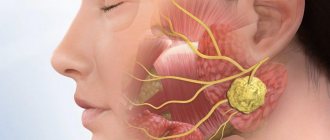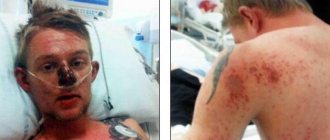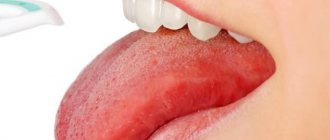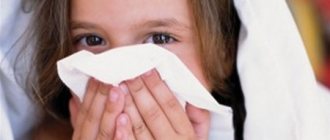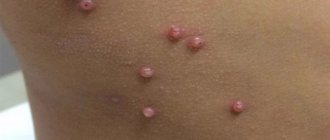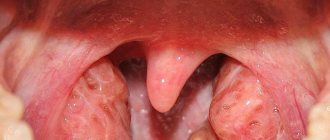May 24, 2020 Diseases
Skin rashes are a consequence of the influence of hostile antigens on the immune system. Skin allergies are accompanied by constant itching and rashes on the skin. The human immune system tries to resist allergens by releasing antibodies, thereby harming healthy tissues.
After exposure to an irritant, allergy symptoms appear within the next 48 hours. Due to the release of histamine in large quantities, redness and dilation of blood vessels are observed. This leads to the formation of a rash, swelling, and blisters.
A mild form of an allergic reaction resembles a common cold in its symptoms. The severe form is a completely different matter. Nausea, dizziness, and convulsions may occur. Anaphylactic shock is also possible, which manifests itself within several hours or even a few minutes, which is very dangerous for human life. If your allergy is severe, you should immediately seek medical help.
Causes of allergies
The most common causative agent of an allergic reaction is chemical-based products. Thus, regular dish detergent can cause rashes and swelling on the body.
It is very difficult to count the number of existing allergens, since their number is growing every year. However, the main factors that provoke allergies are:
- Medications;
- Food and nutritional supplements;
- Animal and insect bites;
- Cosmetics, perfumes;
- Synthetic clothing;
- Natural allergens, etc.
As you can see, the causes of allergies can be very different. With the help of laboratory tests and diagnostics, it is possible to determine what caused it, when, and why.
Contact dermatitis
This disease develops after direct contact with an allergen. At the first sign, swelling of the goat is observed, which is accompanied by an itchy rash. Later, papules appear on the infected areas of the skin. Contact dermatitis can be cured at the first stage using special ointments.
If the effects of the allergen last for 2 weeks and no improvement is observed, then you should seek help from a doctor for professional advice.
The most common manifestations of this disease are in the neck, arms and legs. Of particular danger is the formation of populas around the eyes and mouth.
Types of allergies and their symptoms
There are many varieties of the disease that have characteristic symptoms.
Respiratory
This allergy appears as a reaction of the body to house dust, strong odors and pollen. The manifestations of this disease affect exclusively the respiratory system.
Pathology develops as a result of exposure to external and internal allergens; in more rare cases, it is provoked by infectious factors.
The severity of symptoms is influenced by the sensitivity of the respiratory system and the depth of exposure to the allergen.
The clinical picture of the respiratory form of the disease includes the development of:
- rhinitis;
- tracheitis;
- rhinosinusitis;
- laryngitis.
Chronic exposure to an allergen can lead to bronchial asthma.
To make a correct diagnosis, the doctor must study the clinical picture of the disease in detail and analyze the family history. Identification of provoking factors is of no small importance.
Contact
This type of allergic reaction occurs as a result of direct skin contact with food or household chemicals.
Manifests itself in the form of development:
- atopic dermatitis;
- dermatosis;
- hives.
Characteristic symptoms of the contact form of pathology are:
- redness;
- itching sensation;
- swelling;
- blisters on the skin.
Food
This is the most common type of allergy - according to statistics, about 90% of people react to eating certain foods. Most often, problems are caused by foods such as citrus fruits, eggs, and sweets.
Food allergies manifest themselves as:
- hives;
- eczema;
- neurodermatitis or Quincke's edema.
Sometimes more serious disorders are observed - these may be changes in the blood or problems in the digestive system.
To identify the disease and identify the allergen, it is recommended to conduct skin tests, keep food diaries, and perform provocative tests that provoke an immune response upon contact with certain allergens.
Photo: Eczema
Insect
This type of disease manifests itself as the body's reaction to insect bites. Also, a provoking factor may be the penetration of their metabolic products into the respiratory system.
The reaction to the stings of bees, hornets or wasps is characterized by a deterioration in the general condition. A person may experience weakness, dizziness, and a drop in blood pressure.
Local reactions in the form of tissue swelling or urticaria also often occur.
If the inhaled air contains insect particles, a person may develop symptoms of bronchial asthma. In especially severe cases, the patient experiences anaphylactic shock.
Medicinal
Quite often, drug allergies are observed in children, and cross-reactions to foods and medications often form.
Symptoms of the disease vary depending on exposure to the allergen. A person may develop hives, nausea, or even anaphylactic shock.
Diagnosis of the dosage form of the disease is not carried out, since such tests can lead to extremely negative health consequences.
In this case, symptomatic treatment is carried out when the body reacts.
In the future, it is enough to avoid contact with allergens.
Infectious
This allergy develops with high sensitivity to individual microorganisms. For example, there is a reaction to microbes belonging to the Neisseriaceae family.
Under normal conditions, with proper functioning of the immune system, they do not provoke the development of diseases.
If there are malfunctions in the immune system, a person develops symptoms of bronchial asthma.
Hives
The consequences of this disease, which resemble a nettle burn, can occur in almost all areas of the skin. The cause of the rash can be more than just an allergic reaction. Cold, sea water, sun rays, stressful situations, etc. can have a detrimental effect on the body.
During urticaria, the so-called Quincke's edema can develop, which forms in the form of large swelling in the larynx, which complicates the patient's respiratory activity. In this case, immediate medical intervention and drug therapy are required, which will completely eliminate the dangerous complication and normalize the patient’s condition.
It is worth noting that an allergic reaction can disappear as suddenly as it appears, and sometimes last for several months. In any case, urticaria poses a serious danger to the human body and to life in general.
Types and characteristic signs of skin allergies
An allergic rash can manifest itself in several ways, each of which has its own characteristics. The most common forms of skin allergies are eczema, urticaria, neurodermatitis, and atopic dermatitis.
1. Urticaria.
The disease can occur in one of three forms:
- Acute - outwardly the rash looks like a nettle burn, there is a feeling of severe itching, which is sometimes simply unbearable. Red spots can merge into large plaques. When mucous membranes are affected by rashes, attacks of suffocation are possible. The rash sometimes remains on the body for several weeks or even months.
- Chronic - rashes on the body in the form of red spots last about six weeks. Along with the rash, angioedema may develop in adults.
- Physical - such an allergy on the body in adults becomes a consequence of regular sweating, cold wind blowing, frostbite or exposure to ultraviolet radiation. Red spots appear immediately after exposure to a negative factor and can persist until the cause of the allergy is eliminated. Often such an allergic rash is seasonal.
2. Atopic dermatitis.
The appearance of skin allergies is due to genetic characteristics. Symptoms in the form of extensive red spots or pinpoint rashes (vesicles) can last for a couple of weeks or several months. Formed lesions can not only itch, but also cause pain. In severe cases, watery blisters form. If they get infected (during autopsy), serious skin pathology in the form of pyoderma may develop.
3. Contact dermatitis.
Develops through direct contact of the skin and allergenic substances or objects.
4. Eczema.
In adults, such skin rashes due to allergies can be identified by the presence of red spots that look quite rough due to the rough surface. Often the rash is accompanied by severe itching, and the formed blisters eventually turn into open erosions that become wet and peel off. A feature of this type of allergy is the rapid development of eczematous lesions, their presence on the hands and face.
5. Neurodermatitis.
With this disease, the allergic rash looks like papular formations (nodules that rise above the skin). Their peculiarity lies in their tendency to merge. Also, doctors consider the main sign of neurodermatitis to be an increase in unpleasant itching in the area of the rash in the evening. The skin of adults with this disorder looks rough and dry. Places where red spots resembling plaques are localized are the neck, elbow and popliteal fossae, and tissues surrounding the anus.
Experts identify several types of neurodermatitis that provoke allergies and itching of the skin. These are limited (only certain areas are affected) and diffuse (extensive foci are present) forms. Also included in the category of allergic reactions that cause changes in the skin is dermatographism. As photos of skin allergies in adults demonstrate, in this case, red spots appear after injury to the skin and scratches appearing on it. Typically, local redness is accompanied by a rash that looks like urticaria.
What is the reason for the change in the condition of the skin?
Skin allergies are a fairly common type of allergic pathology. In terms of prevalence, this disorder is equated to bronchial asthma. Various factors can provoke a negative reaction of the skin, including age, environmental conditions, and the presence of chronic diseases (a rash especially often develops against the background of metabolic disorders and pathological deformations in the organs of the digestive system).
Significant external irritants that provoke the appearance of an allergic rash are plants in the flowering phase (daffodils, tulips, geraniums, lilies of the valley and others), food products (strawberries, honey, kiwi, yoghurts with additives, sweet cheeses, juices, fast food), cosmetics and hygiene products, household chemicals. Also strong allergens for some people are synthetic fabrics, animal hair, and house dust. If seasonal allergies are present, it is worth considering the influence of physical factors in the form of cold, sunlight, wind, and water as the root cause of the rash.
An allergic reaction that has developed against the background of a negative psychological state is separately positioned if a person is susceptible to nervous disorders, depression, is overly touchy and impulsive.
Eczema
The appearance of scaly spots, mainly on dry skin, indicates the onset of a disease such as eczema. Subsequently, the spots form plaques that reach several centimeters in size.
Manifestations of this disease are typical in the following areas of the skin: elbows, head, neck, face, under the knee. Eczema is not a contagious disease and most often occurs in childhood. The causes of this disease have not yet been established. Some of the factors that influence the development of the disease are asthma, food allergies, etc.
Microcracks form in damaged areas of the skin, which allow infection to enter the body, so antibiotics are most often used for treatment.
Neurodermatitis
As with eczema, the most common sites of injury are the face, neck, and elbows. In addition, the rash can appear on the thighs, anus and labia. The rash is oval in shape. The causes of this disease are not fully known, but most often it appears in people who have previously suffered from eczema. Genetic causes are also not ruled out.
Since the disease begins to progress in the spring and autumn, when the immune system is most weakened, doctors recommend undergoing immunoprophylaxis.
Sources of allergies on the human body
The causes of allergic diseases on the skin can be anything:
- Cosmetics;
- Pollen;
- Dust;
- Animal and insect bites;
- Medicines;
- Chemical elements;
- Food.
If you notice the first symptoms of an allergy, you should identify its source and free yourself from contact with it as quickly as possible. This could be a new laundry detergent, cosmetics, or a new dish in your diet.
If swelling appears, for example, after a bee sting, then you should carefully examine the affected area for the presence of a sting in the wound.
To reduce skin irritation and relieve itching, you can use a saline compressor or apply ice to the affected area of skin.
If symptoms periodically bother you, you need to be examined in a hospital to determine the source and undergo treatment.
How to treat allergies
As mentioned earlier, skin allergies manifest themselves due to a violent reaction of the immune system to hostile antigens, which for various reasons may end up in the human body. When the immune system is unable to cope with them, a reaction occurs that appears in the form of a rash on the skin. This occurs due to the immune system being too sensitive to certain pathogens (food, chemicals, cosmetics, etc.) In order to successfully begin treatment, it is necessary to identify harmful antigens, this will allow the rash to disappear on its own. But this is often very difficult.
The course of allergy treatment involves the prescription of first-generation drugs, sometimes together with second-generation drugs. Often medications cause side effects such as drowsiness and slight mental fog. Let's find out more about some of these drugs:
- Diphenhydramine. An effective remedy that can eliminate allergic reactions on the skin. After using this drug, not only traces of the lesion disappear, but also cough, runny nose and vomiting disappear. Side effects: drowsiness, difficulty urinating, dry mucous membrane;
- Suprastin. Provides treatment for urticaria, dermatitis, rhinoconjunctivitis, eliminates itching. However, the therapeutic effect is fleeting;
- Tavegil. An excellent remedy for combating itching and redness of the skin;
- Peritol. A good remedy that is aimed at eliminating hives and treating an allergic reaction to cold. In addition to eliminating the symptoms of the disease, the drug relieves headaches, migraines and significantly increases appetite;
- Second generation drugs include the following:
- Claritin. The advantage of this medicine is its good compatibility with other medications and the absence of such side effects as drowsiness. Works well in the fight against allergic reactions.
- Zyrtec. It also fights allergic manifestations on the skin and is perfectly excreted by the kidneys.
- Fenistil. The properties of the drug and the duration of its action are close to first-generation medications. The difference is a mild sedative effect, which causes drowsiness and excessive sedation after taking medications.
Diagnostic methods
Symptoms of an allergic reaction to lemon vary from person to person. If the allergy is severe, then the symptoms that appear can become a threat to a person’s life. In severe cases of an allergic reaction, as mentioned earlier, angioedema, anaphylactic shock and angioedema may develop. If the patient is not helped in time, some complications can even result in death.
Before starting therapeutic treatment, it is necessary to undergo a diagnostic examination. First of all, the patient should consult an allergist. This specialist collects anamnesis, then examines the skin and prescribes laboratory tests.
In order to determine the main cause of the development of an allergic reaction, the patient must undergo a blood test, as well as do a variety of tests for allergens.
When conducting allergy tests, small scratches are made on the patient's hand, after which drops of the allergen are dripped onto them. If a reaction to a particular allergen occurs within 20 minutes, the specialist will prescribe medication.
Treatment of allergies with folk remedies
Using a variety of decoctions and solutions, you can reduce swelling, itching, and irritation on the skin. It is worth noting that folk remedies can eliminate allergy symptoms, but cannot cure the body’s reaction to hostile antigens.
Therefore, experts recommend using herbal decoctions and various homemade ointments in combination with medications throughout the entire course of treatment.
If your child is sick with dermatitis, then a decoction of chamomile and string will be a good and useful remedy for him. They can be used both as lotions and as bath additives before bathing.
Also not a bad remedy is a decoction of bay leaves, which should also be added to the bath before bathing. After water procedures, the affected areas should be lubricated with zinc ointment, which will dry the wounds.
To relieve or reduce itching, you can use the following folk remedies: cabbage brine (salt or soda lotions), calendula solution, propolis decoction, clove oil (together with the use of baby cream).
Also, to eliminate symptoms and make allergies easier to tolerate, it is recommended to take solutions in the form of drinks. For example, mumiyo solution (1 gram per liter of water) can be consumed one glass per day. For children, the dosage is reduced by half. The solution is also used to wipe affected areas.
A decoction of the string has good antiallergic properties. It is recommended to use it as a tea substitute for several years. To prepare, simply brew one teaspoon of the herb in a glass of boiling water.
Some recommendations for eating citrus fruits
In order to prevent an allergic reaction to lemons and other citrus fruits, it is recommended to follow some tips, which are as follows:
- During pregnancy, women are advised to avoid eating citrus fruits, especially if they have high blood pressure.
- Lemon is allowed to be introduced into the diet of children after the age of three. But even before that, parents should consult their pediatrician.
- Under no circumstances should lemon be consumed by people who suffer from allergies to citrus fruits, or who also have diseases of the gastrointestinal tract or kidneys.
- Before eating lemon, it is imperative to rinse it well under running hot water so that all the chemicals that were used to treat the fruit are washed off from the skin.
In conclusion, it is worth noting that lemon allergies are very common. This reaction of the human body is observed with certain characteristics of the immune system. This condition requires mandatory treatment, since in severe cases, an allergic reaction to citrus fruits can even lead to death. For this reason, you should never ignore the symptoms and signs of allergies. If they appear, you should immediately seek advice from an allergist.
Diet and prevention
Food products are quite often the causative agents of an allergic reaction. Seafood, honey, nuts, citrus fruits, cow's milk, strawberries, a variety of seasonings, all of this can easily cause a skin rash.
People who are allergic to any food product try to follow a hypoallergenic diet throughout their lives, excluding this ingredient from the daily diet.
A good way to reduce the likelihood of allergic reactions is to carry out fasting days. At this time, you should consume only fresh vegetables and various decoctions, for example, from rose hips.
Maintaining personal hygiene has always been one of the first rules for preventing illness. Try to follow these recommendations:
- After your walk, be sure to thoroughly wash your face and nasal passages and gargle. Especially during the flowering period of plants;
- Regularly carry out wet cleaning in the apartment, which will ensure fewer allergens in the room;
- Be careful when using cosmetics and detergents. The use of baby soap and shampoo is recommended.
Remember that allergies can very quickly move from the manifestation of the first symptoms to an aggravated form. If signs of an allergic reaction appear, take immediate action or consult a doctor. In the absence of proper attention, many diseases can develop that will harm not only the skin, but also the internal organs.
Particular attention should be paid to the treatment of allergies in children, since at an early age allergy symptoms can be eliminated for the rest of their lives.
Thanks to modern treatment methods and laboratory tests, it is possible to accurately identify the allergen in order to reduce interaction with it in the future.
Tags: Skin allergies
Causes of an allergic reaction
Before you begin to diagnose and treat such an allergic reaction, you should consider the main causes of its occurrence. Is it possible to be allergic to lemon? Such a reaction of the human body to this citrus is quite likely, because it is highly allergenic. The main causes of lemon allergy are as follows:
- Intolerance by the human body to the protein that is part of lemon. It is this element that acts as the main allergen. The human immune system identifies the protein as some kind of foreign object, as a result of which it begins to reject it. Externally, this manifests itself as an allergic reaction. In this case, it is customary to talk about a true allergy to lemon. It is worth paying attention to the fact that a person begins to experience allergic symptoms not only after eating fruits, but also during the use of other food products, cosmetics, and medications that contain acids, extracts or lemon oil.
- Another reason that causes symptoms of lemon allergy in adults and children lies in the irritating effect of various chemicals that are used to treat the fruit. As a rule, manufacturers treat lemons with substances that allow them to be stored for a long time. In addition, such substances are able to preserve the presentable appearance of the lemon for as long as possible. Various chemical compounds protect fruits from mold and rotting. In such situations, the allergy is not considered to be the result of a specific intolerance by the human body to the lemon itself.
- When considering whether lemon causes allergies in the presence of any diseases, it should be noted that in diseases of the gastrointestinal tract, allergies are usually called false. The risk of an allergic reaction when consuming lemon increases with dysbacteriosis, as well as with hepatitis of various origins.
- Another possible cause of lemon allergy is heredity. About half of the reported cases indicate that people suffer from individual intolerance to citrus fruits due to a hereditary form. It is worth noting that the risk of an allergy to this fruit will be present even if close relatives suffered from a food allergic reaction of a completely different form, for example, chocolate intolerance.
In some cases, allergic manifestations are observed as an isolated case if a person has eaten a fairly large amount of this citrus. Specific proteins contained in lemon, when entering the human body in large quantities, begin to stimulate the activation of the immune system. And at the same time it begins to produce special antibodies directed against the allergen.
Symptoms of lemon allergy in children are pronounced. This is due to the fact that the child’s immunity is not yet fully formed.



